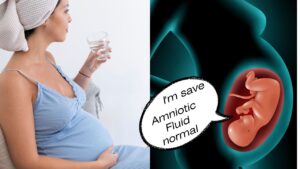INTRODUTION
Sexually transmitted diseases (STDs), also known as sexually transmitted infections (STIs), are infections transmitted through sexual contact. This includes vaginal, anal and oral sex. Understanding STDs is crucial to maintaining sexual health and preventing the spread of these infections. This article discusses in detail the various aspects of STDs, including their types, symptoms, prevention and treatment.
Types of Sexually Transmitted Diseases
Types of sexually transmitted diseases
There are numerous STDs caused by various pathogens, including bacteria, viruses and parasites. Some common STDs include:
Chlamydia: Caused by the bacterium Chlamydia trachomatis, chlamydia is one of the most prevalent STDs. It often presents with mild symptoms or none at all, making it easy to spread unknowingly.
Gonorrhea: This bacterial infection, caused by Neisseria gonorrhoeae, affects the mucous membranes of the reproductive tract, mouth, throat, eyes, and rectum.
Syphilis: Caused by the bacterium Treponema pallidum, syphilis progresses in stages and can lead to severe complications if left untreated.
Human Immunodeficiency Virus (HIV): HIV attacks the immune system, leading to Acquired Immunodeficiency Syndrome (AIDS). It’s a viral infection that can be managed with antiretroviral therapy (ART).
Herpes Simplex Virus (HSV): There are two types, HSV-1 and HSV-2, causing oral and genital herpes, respectively. This viral infection results in painful sores and blisters.
Human Papillomavirus (HPV): HPV is a viral infection with many strains, some of which can cause genital warts and cervical cancer.
Trichomoniasis: Caused by the parasite Trichomonas vaginalis, this STD often presents with itching, burning, and unusual discharge.
Hepatitis B: A viral infection that affects the liver, hepatitis B can be transmitted through sexual contact.
Symptoms of Sexually Transmitted Diseases
Symptoms of STDs can vary widely depending on the infection. Common symptoms include:
- Unusual discharge from the penis or vagina
- Pain or burning sensation during urination
- Sores, bumps, or blisters near the genitals, anus, or mouth
- Itching, irritation, or swelling in the genital area
- Pain during sex
- Unexplained bleeding
However, many STDs can be asymptomatic, meaning individuals might not experience noticeable symptoms but can still spread the infection to others.
Prevention of Sexually Transmitted Diseases
Preventing STDs involves a combination of practices and behaviors aimed at reducing the risk of infection. Key prevention strategies include:
Use of Condoms: Latex condoms are highly effective in reducing the transmission of most STDs when used correctly and consistently.
Regular Testing: Routine screening for STDs is crucial, especially for sexually active individuals with multiple partners. Early detection allows for prompt treatment and reduces the spread of infections.
Vaccination: Vaccines are available for certain STDs, such as HPV and hepatitis B. Getting vaccinated can significantly reduce the risk of these infections.
Monogamous Relationships: Being in a mutually monogamous relationship with an uninfected partner reduces the risk of contracting STDs.
Limiting Sexual Partners: Reducing the number of sexual partners can decrease the likelihood of exposure to STDs.
Avoiding Alcohol and Drug Use: Substance use can impair judgment and lead to risky sexual behaviors. Avoiding or moderating the use of alcohol and drugs can help maintain safer sexual practices.
Treatment of Sexually Transmitted Diseases
The treatment for STDs varies depending on the type of infection. Here’s an overview of the treatments available for common STDs:
Bacterial STDs (Chlamydia, Gonorrhea, Syphilis): These infections are typically treated with antibiotics. It’s crucial to complete the full course of antibiotics as prescribed, even if symptoms improve.
Viral STDs (HIV, HSV, HPV, Hepatitis B): While viral infections cannot be cured, they can be managed with antiviral medications. For HIV, antiretroviral therapy (ART) helps maintain a low viral load and prevents the progression to AIDS. HSV and HPV can be managed with antiviral drugs and vaccines.
Parasitic STDs (Trichomoniasis): These infections are treated with antiparasitic medications.
Early treatment is essential to prevent complications and reduce the risk of transmission. If you suspect you have an STD, seek medical advice promptly.
The Importance of Communication and Education
Open communication with sexual partners about STDs and sexual health is vital. Discussing sexual histories, testing, and prevention methods can help partners make informed decisions and reduce the risk of infection.
Education plays a crucial role in STD prevention. Comprehensive sex education should cover the risks, symptoms, prevention, and treatment of STDs. Educating young people about safe sexual practices can lead to healthier behaviors and reduce the incidence of STDs
Addressing the Stigma of STDs
The stigma associated with STDs can discourage individuals from seeking testing and treatment. It’s important to approach the topic with empathy and understanding, promoting a non-judgmental attitude. Destigmatizing STDs encourages open discussions and timely medical intervention, ultimately reducing the spread of infections.
Conclusion
Sexually Transmitted Diseases are a significant public health concern, but they are preventable and manageable with the right knowledge and practices. Regular testing, safe sexual practices, open communication, and prompt treatment are essential components in the fight against STDs. By staying informed and proactive, individuals can protect their sexual health and contribute to a healthier society.

The Ultimate Guide to an Effective Skin Care Routine At Home
INDRODUCTION In the pursuit of glowing and healthy skin, an effective skin care routine is paramount. With the plethora of products and advice available, understanding

Sexually Transmitted Diseases (STDs): Prevention, Symptoms, and Treatment
INTRODUTION Sexually transmitted diseases (STDs), also known as sexually transmitted infections (STIs), are infections transmitted through sexual contact. This includes vaginal, anal and oral sex.

How to Sleep Faster for Kids ||How to Help Your Kids Fall Asleep Faster: Tips and Techniques
INTRODUCTION Getting babies to fall asleep quickly can be a challenge for many parents. With their boundless energy and curious minds, bedtime can quickly turn

Amniotic Fluid Leak Test at Home: A Comprehensive Guide
INTRODUCTION Pregnancy is a time filled with its fair share of excitement, anticipation and anxiety. One of the concerns is the fear of leaking amniotic
The Marvelous World of Mushrooms: A Comprehensive Guide
INTRDUCTION Mushrooms, those mysterious fungi that sprout in forests and fields, are fascinating organisms with diverse roles in nature and human life. From culinary delights

Immediate Constipation Relief at Home: Effective Remedies and Tips
INDRODUCTION Constipation is a common digestive problem that can cause discomfort and disrupt daily life. Although occasional constipation is normal, frequent occurrences can be frustrating.

